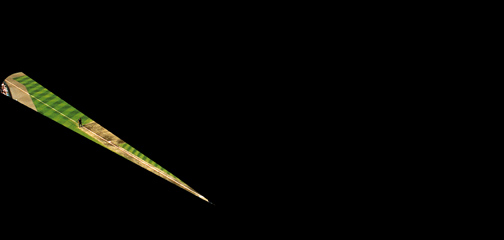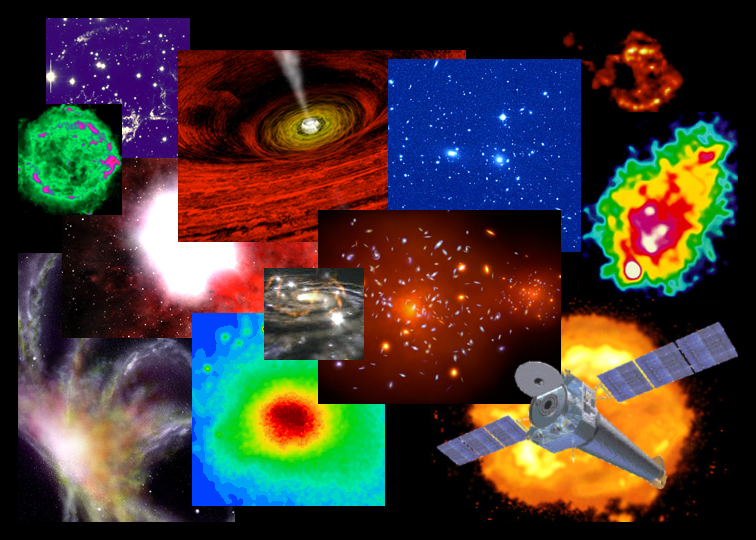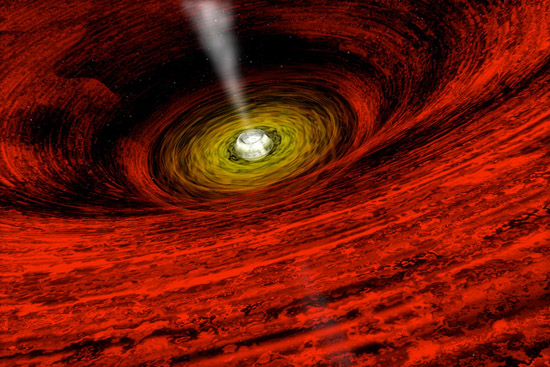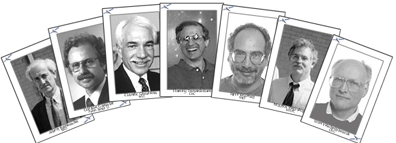An overview of the Chandra mission and goals, Chandra's namesake, top 10 facts.
Classroom activities, printable materials, interactive games & more.
Overview of X-ray Astronomy and X-ray sources: black holes to galaxy clusters.
All Chandra images released to the public listed by date & by category
Current Chandra press releases, status reports, interviews & biographies.
A collection of multimedia, illustrations & animations, a glossary, FAQ & more.
A collection of illustrations, animations and video.
Chandra discoveries in an audio/video format.
Disclaimer: This material is being kept online for historical purposes. Though accurate at the time of publication, it is no longer being updated. The page may contain broken links or outdated information, and parts may not function in current web browsers. Visit chandra.si.edu for current information.
Highlights Of July 7 Chandra Science Briefing (L-14)
July 12, 1999 ::
"Chandra is the Hubble Space Telescope of X-ray astronomy and we expect it to do as much for science as Hubble has," said Dr. Edward Weiler, NASA Associate Administrator for Space Science at a pre-launch
scientific briefing at NASA Headquarters last week. "Chandra will answer many questions about the high-energy universe, and will enable us to pose questions we can't dream of today. That's what the adventure of science is all about."
Dr. Alan Bunner, Chandra program scientist at Headquarters, used a baseball analogy to illustrate the importance of using X-ray telescopes and telescopes sensitive to invisible light. "Visible light occupies only a tiny sliver of the electromagnetic spectrum," Bunner explained. "Imagine if you could see only a tiny sliver of a baseball field. You would never be able to figure out the rules of the game. We need x-ray, gamma-ray, ultraviolet, infrared and radio telescopes to cover the full range of wavelengths to get an accurate picture."
 |
 |
| A small sliver of a baseball field (left) vs. the full picture (right). Which image conveys more information? Photo: S.Wolk |
When asked to list the most important scientific questions to be investigated by Chandra, Dr. Harvey Tananbaum, director of the Chandra X-ray Center, responded, "That's like asking which of your children is the most handsome or beautiful. We are excited about the whole range of science that we will be doing, from comets in our solar system to quasars ten billion light years from Earth."

A montage of cosmic X-ray sources.
Illustration: CXC |
Chandra's project scientist, Dr. Martin Weisskopf of Marshall Space Flight Center, emphasized the importance of Chandra in order to understand bizarre cosmic phenomena such as neutron stars
and black holes. "In these objects we find matter under extreme conditions that cannot be reproduced on Earth," he said. "They give off most of their energy in X-rays, so we can't hope to understand these objects without an X-ray telescope."
Panelist Dr. Kimberly Weaver of Goddard Space Flight Center was also excited about the opportunity of learning more about black holes. "With an X-ray telescope, we can see emission from gas all the way until it vanishes...beyond the event horizon. With Chandra, we should learn a lot about the event horizon."

Black Hole Rendering
Illustration: CXC/A.Hobart |
Another way to get at the nature of black holes is to study matter that somehow escapes being captured by a black hole. The enormous forces created near a black hole can eject material in jets of high-energy particles moving at near
the speed of light. "Chandra's observations of these jets will help us to understand what's going on around black holes," Weaver said.
Questions from the press were raised at the briefing about the problems that have delayed the launch of Chandra by ten months. Had those problems been solved?
"We've done everything humanly possible to insure that we have a safe mission," Weiler replied. "But you must remember, this is not a trip to Grandma's on a Sunday afternoon. This is the largest payload ever carried by the Space Shuttle. This is high-tech stuff and there are always risks. We reduce those risks to a minimum as best as humanly possible."
X-ray astronomers such as Tananbaum, Weisskopf, and Bunner are veterans of the high-stakes astrophysical poker game they are playing. They have been there before. Along with many of their colleagues on the Chandra program, they have been involved in development of X-ray telescopes since the '60's. They know the odds are on their side because of their long experience with space astronomy...and they enjoy it!

A winning hand - key scientists who helped build Chandra. From Left: Albert Brinkman [Prin. Inv. LETG], Gordon Garmire [Prin. Inv. ACIS], Claude Canizares [Prin. Inv. HETG, CXC Dep. Dir.], Harvey Tananbaum [CXC Dir.], Steve Murray
[Prin. Inv. HRC], Martin Weisskopf [Proj. Sci.], Leon Van Speybroeck [Teles. Sci.]
Illustration: CXC |
"Sure, we have had delays. We have had problems," Weisskopf said. "But we've had a lot of pleasure in meeting those challenges. It is worth doing and worth waiting for."
"You can sleep at night knowing you have done everything you can do to prepare." Tananbaum said "We are ready."
Disclaimer: This material is being kept online for historical purposes. Though accurate at the time of publication, it is no longer being updated. The page may contain broken links or outdated information, and parts may not function in current web browsers. Visit chandra.si.edu for current information.









